Bologna Impressive Sights - Luoghi Impressionanti di Bologna
- Maria Scuor
- Feb 24, 2024
- 11 min read
Italiano in ogni sezione
Gianni and I spent a night in Bologna and we should have spent two. There is so much to see in this beautiful city that one night wasn’t enough. You can read more about Bologna in my Bologna Piazza Maggiore Blog and Bologna Catholic Institutes.
In this blog I’m going to highlight some of the other impressive sights Bologna had to offer.
Porticoes - Portici
Walking in the historic center of Bologna you just can’t help but be in awe of the porticoes (walkways with some kind of wall or columns covered by a roof) connecting buildings and housing cafés and shops. Interesting enough, no other city in the world that has as many porticoes as Bologna. There are 53 km (33 mi) of porticoes in total, which 38 km (24 mi) are in the historic center.
The porticoes in Bologna date back to 1041 when houses were increased by expanding the upper floor and creating wooden projections. Over the years the overhangs increased in size and it required some sort of column or wall to prevent the structures from collapsing, hence creating the worldwide famous arcades.
The expansion of these arcades arose from the need to cope with the influx of students and scholars from the University of Bologna and also immigration from the countryside. In 1928, the local municipality established that all new houses had to be built with a portico and those houses already existing were required to add one. During the Middle Ages these were built in wood but on March 26, 1568 the pontifical governor Giovanni Battista Dora issued a decree that porticoes would need to be rebuilt in bricks and stone. There are however some buildings with wooden porticoes surviving today.
The portico of San Luca which connects Porta Saragozza with the Sanctuary of the Madonna di San Luca is the city's and worlds longest portico at 3,796 m (12,454 ft) long. Because the porticoes of Bologna have significate cultural and artistic value, UNESCO declared them a World Heritage Site.
Passeggiando nel centro storico di Bologna non si può fare a meno di rimanere a bocca aperta di fronte ai portici (passerelle con una sorta di muro o colonne coperte da un tetto) che collegano edifici e ospitano caffè e negozi. Curiosamente, nessun'altra città al mondo ha così tanti portici come Bologna. Ci sono 53 km di portici in totale, di cui 38 km sono nel centro storico.
I portici di Bologna risalgono al 1041 quando le case furono aumentate ampliando il piano superiore e creando sporgenze lignee. Nel corso degli anni gli aggetti aumentarono di dimensioni e fu necessaria una sorta di colonna o muro per evitare che le strutture crollassero, creando così i portici famosi in tutto il mondo.
L'ampliamento di questi portici nacque dall'esigenza di far fronte all'afflusso di studenti e studiosi provenienti dall'Università di Bologna e anche all'immigrazione dalle campagne. Nel 1928, il comune locale stabilì che tutte le nuove case dovessero essere costruite con un portico e quelle già esistenti dovevano aggiungerne uno. Durante il Medioevo queste furono costruite in legno ma il 26 marzo 1568 il governatore pontificio Giovanni Battista Dora emanò un decreto che prevedeva la ricostruzione dei portici in mattoni e pietra. Ci sono comunque alcuni edifici con portici in legno sopravvissuti fino ad oggi.
Il portico di San Luca, che collega Porta Saragozza con il Santuario della Madonna di San Luca, è il portico più lungo della città e del mondo, con i suoi 3.796 m di lunghezza. Poiché i portici di Bologna hanno un valore culturale e artistico significativo, l'UNESCO li ha dichiarati Patrimonio dell'Umanità.
Quadrilateral Market – Mercato nel Quadrilatero
The Quadrilateral district dates back to the Middle Ages and provides a market environment where you walk down the narrow walkways to do your shopping. When you leave Piazza Maggiore and cross the tall archways, the ancient market boasts a long tradition of specialized crafts and commercial activities.
These shops have been handed down through the generations however they continue to sell the same goods and keep their historic architecture and furnishings. This neighbourhood is the favourite of lovers of food and here you can find all kinds of Bolognese specialties. Tortellino, Tagliatelle, green lasagna, platters of mortadella, other cured meats and Bolognese cutlets are favourites among the foodies.
You can find ancient goldsmiths that maintain the tradition of jewelry making in their shops, historic chemist shops that still maintain the atmosphere of old pharmacies, all kinds of shops from mid-range to extra luxury, fruit and vegetable stands, fresh pasta houses, traditional butcher shops and fish stalls. It is a wonderful street to stroll back in history.
Il quartiere del Quadrilatero risale al Medioevo e offre un ambiente di mercato dove si cammina lungo gli stretti viali per fare la spesa. Quando si esce da Piazza Maggiore e si attraversano gli alti archi, l'antico mercato vanta una lunga tradizione di artigianato specializzato e attività commerciali.
Questi negozi sono stati tramandati di generazione in generazione, ma continuano a vendere gli stessi prodotti e mantengono la loro architettura e i loro arredi storici. Questo quartiere è il preferito dagli amanti del cibo e qui si possono trovare tutti i tipi di specialità bolognesi. Tortellino, tagliatelle, lasagne verdi, taglieri di mortadella, altri salumi e cotolette alla bolognese sono i preferiti dai buongustai.
Si possono trovare antichi orafi che mantengono la tradizione della gioielleria nelle loro botteghe, farmacie storiche che mantengono ancora l'atmosfera delle vecchie farmacie, negozi di ogni genere dalla fascia media all'extra lusso, bancarelle di frutta e verdura, case di pasta fresca, macellerie tradizionali e bancarelle di pesce. È una strada meravigliosa per passeggiare indietro nella storia.
Here are some photos of the market – Ecco alcune foto del mercato
Bologna Library - Biblioteca Comunale dell’Archiginnasio
The Archiginnasio library in Bologna is located in the Archiginnasio Palace, one of the most significant buildings in Bologna. It is located in the historic center and hosted the University from 1563 to 1883. Inside you will find dense decoration: over 7,000 student coats of arms affixed on the walls (6,000 survive) and still represents the largest heraldic mural in the world, monuments, and inscriptions of honor.
You can pay to visit the Anatomical Theatre which was designed in 1637 for anatomical lessons. The walls are covered in spruce and decorated with 12 statues depicting twelve famous physicians. The coffered ceiling was built by Antonio Levanti in 1645 and is decorated with symbolic figures representing 14 constellations of Apollo, the protector of Medicine. The astrological theme goes back to tradition of consulting the stars before proceeding with operations or administration of drugs.
The Stabat Mater Room is a large reading room for Lawyers which is named in memory of the first performance by Gioachino Rossini’s Stabat Mater in 1842. To me the room was powerful with its walls of coats are arms, old books in locked bookcases that I’m sure can tell many stories, and gated door that gives us a look into the rows of bookcases that have historical books. The library is the largest in Emilia-Romagna and has 850,000 books and pamphlets, 2,500 incunabula, 15,000 16th century editions, 120,000 ancient books and 8,500 manuscripts. Plus, many periodicals, photos, letters, prints and drawings.
The library was founded in 1801 at the convent of San Domenico to collect books of religious orders that were suppressed by Napoleon. In 1883, the library was moved to Archiginnasio palace where Luigi Frati, director from 1858 – 1902 organized it. The increase in collections was due to the library purchasing the works as well as donations from illustrious personalities and scholars. The last significant donation was from the collection of Italian philosopher and literary critic, Luciano Anceschi in 1991 which consists of 27,000 volumes of his personal library, 3,000 printed documents, and 17,688 letters.
La biblioteca dell'Archiginnasio di Bologna si trova nel Palazzo dell'Archiginnasio, uno degli edifici più significativi di Bologna. Si trova in pieno centro storico e ospitò l'Università dal 1563 al 1883. Al suo interno troverete una fitta decorazione: oltre 7.000 stemmi studenteschi apposti sulle pareti (6.000 sono sopravvissuti) e rappresenta ancora oggi il più grande murale araldico del mondo, monumenti e iscrizioni d'onore.
Si può pagare per visitare il Teatro Anatomico che è stato progettato nel 1637 per le lezioni di anatomia. Le pareti sono rivestite in abete rosso e decorate con 12 statue raffiguranti dodici medici famosi. Il soffitto a cassettoni fu realizzato da Antonio Levanti nel 1645 ed è decorato con figure simboliche che rappresentano 14 costellazioni di Apollo, protettore della Medicina. Il tema astrologico si rifà alla tradizione di consultare gli astri prima di procedere con operazioni o somministrazione di farmaci.
La Sala dello Stabat Mater è una grande sala di lettura per Avvocati che prende il nome dalla prima rappresentazione dello Stabat Mater di Gioachino Rossini nel 1842. Per me la stanza era potente con le sue pareti di cappotti e armi, vecchi libri in librerie chiuse a chiave che sono sicuro possano raccontare molte storie, e la porta sbarrata che ci dà uno sguardo nelle file di librerie che hanno libri storici. La biblioteca è la più grande dell'Emilia-Romagna e conta 850.000 volumi e opuscoli, 2.500 incunaboli, 15.000 edizioni cinquecentesche, 120.000 libri antichi e 8.500 manoscritti. Inoltre, molti periodici, foto, lettere, stampe e disegni.
La biblioteca fu fondata nel 1801 presso il convento di San Domenico per raccogliere i libri degli ordini religiosi soppressi da Napoleone. Nel 1883 la biblioteca fu trasferita nel palazzo dell'Archiginnasio dove Luigi Frati, direttore dal 1858 al 1902. L'aumento delle collezioni è dovuto all'acquisto delle opere da parte della biblioteca e alle donazioni di personaggi illustri e studiosi. L'ultima donazione significativa è stata quella della collezione del filosofo e critico letterario italiano Luciano Anceschi nel 1991, che comprende 27.000 volumi della sua biblioteca personale, 3.000 documenti a stampa e 17.688 lettere.
Two Towers – Due Torre
Between the 12th and 13th century, Bologna was full of towers and most were tall with the highest being 97 m (318 ft) tall. The exact number of towers built in medieval Bologna isn’t clear but it is believed there were close to 100 of them. It isn’t known why there were so many towers but one hypothesis is that the richest families built them as a symbol of wealth and status as well for defensive purposes to guard their lands. Some of the smaller ones were built as dwellings.
The construction of the towers was strenuous and took 3 - 10 years to build a tower of 60 m (196 ft). Each tower had a square cross-section with foundations 5 – 10 m deep, reinforced with poles hammered into the ground and covered with pebbles and lime. The base was made of big blocks of selenite stone and the walls became thinner and lighter as the structure was raised. A “sacco” masonry was used which had a thicker inner wall and thinner outer wall and gap filled with stones and mortar.
In the 13th century many of the towers were taken down, demolished or simply collapsed. The remaining may have been used through the centuries as prisons, shops, residential buildings or city towers. In the 20th century many were demolished to make room for a city plan and now there are about 21 that remain.
The most famous pair of towers are known as the Two Towers. Located in Piazza di Porta Ravegnana, the taller one at 97 m (318 ft) is called Asinelli Tower and the smaller more leaning one at 47 m (155 ft) is called Garisenda Tower.
The Asinelli Tower was built between 1109 and 1119 by the knight Gherardo Asinelli in aim to control Bologna and the surrounding territory. Following the decline of the family, it was sold to the municipality of Bologna in the 14th century and it was used as a prison. Prisoners would be put in cages collocated at the side of the tower, left there without food and water, and died in them while the people watched them. Walking up 498 internal steps gives you amazing views of Bologna. However currently the tower is closed due to renovations.
The Garisenda Tower is located next to the Asinelli Tower and was built around the same time by the Garisenda family. It stood at 60 m (196 ft) when it was first built, however it began to tilt soon after it was built when the ground underneath began to give way. In the 14th century it had to be lowered to 48 m (157 ft) as the slant was becoming dangerous. It slants at 4 degrees compared to the Leaning Tower of Pisa which slants at 3.9 degrees.
In October of 2023, the tower was sealed off by the city of Bologna as the structure was tilting too much. It is noted that the tower has leaned since it has been built but it sustained additional damaged in the medieval era when ironwork and bakery ovens were installed inside. The tower has been monitored for cracks and shifting and on December 2, 2023 the city announced the situation is critical and that the tower could collapse.
The city is currently building a 5 m tall barrier to contain the debris in the event it falls and is expecting to spend more than 20 million euros to restore and consolidate the tower. The work is expected to take ten years.
Tra il XII e il XIII secolo, Bologna era piena di torri e la maggior parte erano alte, con la più alta alta di 97 m. Il numero esatto di torri costruite nella Bologna medievale non è chiaro, ma si ritiene che ce ne fossero quasi 100. Non si sa perché ci fossero così tante torri, ma un'ipotesi è che le famiglie più ricche le costruissero come simbolo di ricchezza e status, oltre che a scopo difensivo per proteggere le loro terre. Alcuni di quelli più piccoli sono stati costruiti come abitazioni.
La costruzione delle torri è stata faticosa e ci sono voluti 3 - 10 anni per costruire una torre di 60 m. Ogni torre aveva una sezione trasversale quadrata con fondazioni profonde 5 – 10 m, rinforzate con pali conficcati nel terreno e ricoperte di ciottoli e calce. La base era fatta di grossi blocchi di pietra selenite e le pareti diventavano più sottili e leggere man mano che la struttura veniva sollevata. Si usava una muratura a "sacco" che aveva una parete interna più spessa e una parete esterna più sottile e un'intercapedine riempita di pietre e malta.
Nel XIII secolo molte delle torri furono abbattute, demolite o semplicemente crollate. I rimanenti potrebbero essere stati utilizzati nel corso dei secoli come prigioni, negozi, edifici residenziali o torri cittadine. Nel XX secolo molti sono stati demoliti per fare spazio a un piano urbanistico e ora ne rimangono circa 21.
La coppia di torri più famosa è conosciuta come le Due Torri. Situata in Piazza di Porta Ravegnana, quella più alta a 97 m è chiamata Torre degli Asinelli e quella più piccola e più inclinata a 47 m è chiamata Torre Garisenda.
La Torre degli Asinelli fu costruita tra il 1109 e il 1119 dal cavaliere Gherardo Asinelli con lo scopo di controllare Bologna e il territorio circostante. In seguito al declino della famiglia, fu venduto al comune di Bologna nel XIV secolo e fu adibito a carcere. I prigionieri venivano messi in gabbie collocate sul lato della torre, lasciati lì senza cibo e acqua, e morivano in esse mentre la gente li guardava. Salendo 498 gradini interni si gode di una vista mozzafiato su Bologna. Tuttavia, attualmente la torre è chiusa a causa di lavori di ristrutturazione.
La Torre Garisenda si trova accanto alla Torre degli Asinelli e fu costruita nello stesso periodo dalla famiglia Garisenda. Era alto 60 m quando fu costruito per la prima volta, tuttavia iniziò a inclinarsi subito dopo la sua costruzione, quando il terreno sottostante iniziò a cedere. Nel XIV secolo dovette essere abbassato a 48 m poiché l'inclinazione stava diventando pericolosa. Ha un'inclinazione di 4 gradi rispetto alla Torre di Pisa che è inclinata di 3,9 gradi.
Nell'ottobre del 2023, la torre è stata sigillata dalla città di Bologna poiché la struttura era troppo inclinata. Si noti che la torre è inclinata da quando è stata costruita, ma ha subito ulteriori danni in epoca medievale quando al suo interno sono stati installati forni in ferro e da forno. La torre è stata monitorata per verificare la presenza di crepe e spostamenti e il 2 dicembre 2023 la città ha annunciato che la situazione è critica e che la torre potrebbe crollare.
La città sta attualmente costruendo una barriera alta 5 metri per contenere i detriti in caso di caduta e prevede di spendere più di 20 milioni di euro per restaurare e consolidare la torre. I lavori dovrebbero durare dieci anni.
Here is a photo of what it is believed Bologna looked like with all the towers - Ecco una foto di come si ritiene fosse Bologna con tutte le torri.
Credit to Toni Pecoraro - Own work, CC BY-SA 3.0, https://commons.wikimedia.org/w/index.php?curid=25219068

Here is a photo of what the two towers looked like when they were built - Ecco una foto di come apparivano le due torri quando furono costruite
Credit to Blofeld of SPECTRE, CC BY-SA 3.0, https://commons.wikimedia.org/w/index.php?curid=2892520



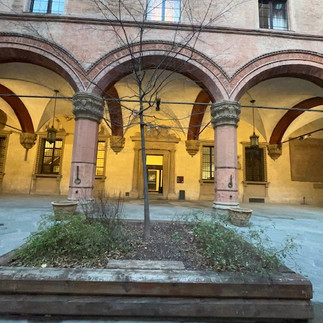






























































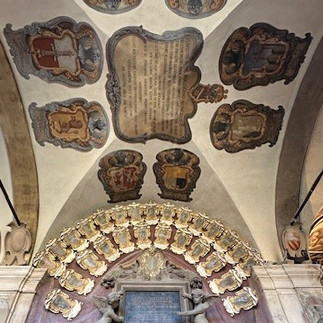







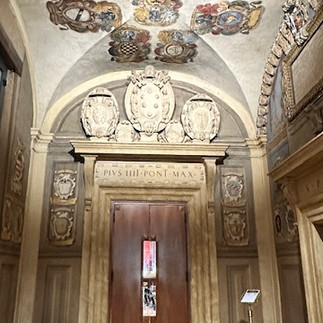
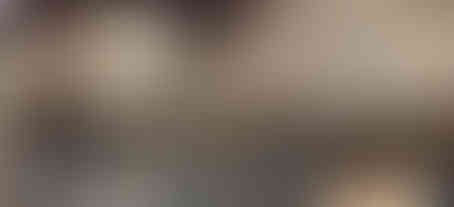

















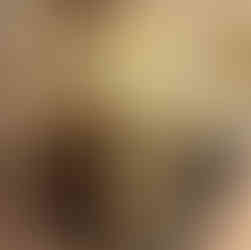















Commentaires